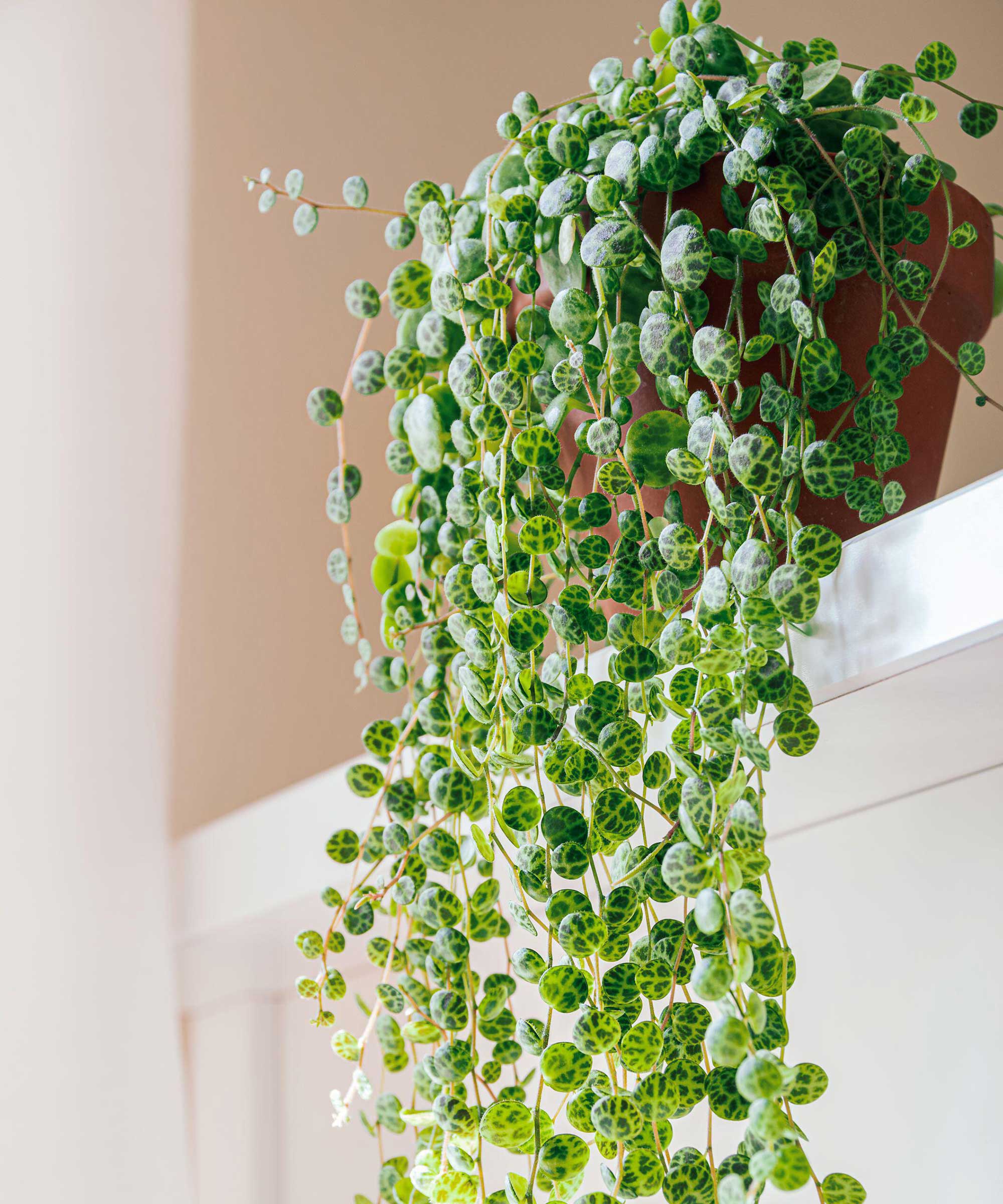How to make a house less depressing in fall and winter – 9 expert tricks to avoid Seasonal Affective Disorder
Seasonal affective disorder doesn't have to be a fact of life every winter, psychologists and interior designers assure us


Fall and winter can be a great time to hunker down at home and get cozy, but spending all the time indoors is not everyone's cup of tea, leading to low mood or Seasonal Affective Disorder. So how do you make a house less depressing in fall and winter?
Between making a house look cozy. nailing your dark season lighting ideas, and prepping outdoor spaces for winter days outside, there are several ways designers and expert psychologists alter spaces to cope with the darker days.
Here, they share them all.
How to make a house less depressing in fall and winter
Your home and environment can have a drastic impact on the way you feel, especially if you are spending an increased amount of time indoors with fewer hours of natural light. It can sometimes result in a condition called SAD or ‘winter depression’, a type of intermittent low mood that comes and goes with the colder months.
How you maintain your home is, therefore, vital to physical and mental well-being in fall and winter.
1. Declutter and clean

Although cleaning and decluttering don't sound like the best activity to cheer you up, it has been proven that having a cluttered home contributes to a low mood – especially when you spend so much time indoors. Whipping out your fall cleaning checklist and making space in your home is, therefore, an unbeatable cleaning habit to beat winter blues, and a must when it comes to making a house less depressing in fall and winter.
Parveen Garg, cleaning expert and manager at OlaClean says, ‘Get rid of anything that you don't use or need. You can also organize your belongings in a way that makes sense for the cooler months, such as pulling warmer clothing and coats to the front of closets to help you get outside more easily to improve your mood,’
Design expertise in your inbox – from inspiring decorating ideas and beautiful celebrity homes to practical gardening advice and shopping round-ups.

Laundry scent boosters are safe on all colors and fabrics, making them the perfect scent enhancer for everything from your crisp white towels to dark work pants. This comforting vanilla fragrance is perfect for fall and winter days when you want to feel cozy.

Orchard-fresh Apple Cider cleaner has a sweet and crisp scent, with a little touch of spice. This cleaner is safe to use on many surfaces including hardwood floors.

Acorn Spice hand soap blends the rich, nutty scent of acorn with cinnamon and spices for a perfect air of autumn comfort to help boost your mood through fall and winter.
2. Prioritize your lighting scheme

Making a living room cozy with lighting is a great idea when looking to hunker down for a cozy fall and winter season, but having too much low lighting can drastically impact your mood in darker months.
Marta Balazs, interior designer and founder of Embee Interiors, explains, ‘Light impacts our body's internal clock and mood. Maximizing natural light is a mood booster; it regulates our circadian rhythms, so it is vital to let into your homes as much as possible in the day,’ she says.
‘But when natural light is scarce, smart dimmable lighting, which mimics natural daylight can be a game-changer for our mood,’ she adds.
Personally, I love the Philips Hue White Ambiance bulbs, available at Amazon, which can be set to automatically follow natural light patterns throughout the day, moving from a warm white glow to daylight without you having to change your bulbs. I have been using them for over a year and have just bought some more. They make a big difference in my living room, bedroom, and office and make artificial light feel a little bit more natural.

I will never go back to using normal bulbs after trying the Phillips Hue set. The Phillips Hue Ambience Bulbs can be controlled from your smartphone or smart home device, allowing a range of temperatures from warm white to daylight to rainbow colors in one bulb.
3. Rethink your pantry restock

When restocking your fridge and pantry, it is important to consider which minerals you need to help boost your mood and energy through the darker months.
Lauren Farina, founder and psychotherapist at Invited Psychotherapy and Coaching says, 'Another tip for supporting mood in the wintertime is to align our eating habits with the season's light and dark cycles. This includes eating a protein-rich breakfast within an hour of waking and eating dinner no less than three to four hours before bedtime.
'I also recommend consuming locally, seasoning grown foods as another way to align the ways the body is designed to function in the winter,' she continues. 'Stock the kitchen with root vegetables, including potatoes, carrots, and squash, and focus on hearty stews and soups to support the brain's metabolism, and provide it with the energy needed to stabilize mood during the darker, colder months.'
4. Use soft materials to create a comforting tactile space

Using texture in interior design is a must year-round in your home, but it is especially important when you find yourself indoors for longer periods of time, reminds Julio Arco, interior designer and founder of Bark & Chase.
‘Building upon the need for coziness, the tactile experience of a space is paramount. Introducing a variety of textures, especially natural ones like wood, stone, and tile, not only appeals to our senses but can also be associated with feelings of warmth and comfort.'

Investing in a plaid wool throw is a great way to make any home look instantly cozy. This merino wool throw is brilliant for heat regulation. It can keep you cool in summer, and warm in fall and winter.

Super duper soft, these furry throw pillows are perfect for snuggling up with on a cozy fall or winter evening. There's even a matching throw blanket, too.

Appealing to every sense will help to boost your mood. This large rich pumpkin soufflé scented candle is blended with browned butter, toasted nutmeg, and cinnamon, then swirled with sweet vanilla cream and brown sugar.
Dr. Mary Poffenroth, biopsychologist at San Jose State University adds, 'Studies have shown that, when we touch something soft, our brains respond by releasing dopamine and serotonin, neurotransmitters linked to pleasure and happiness.
'Multiple studies have found that simply holding or running our hands along soft materials like fleece, cashmere, or velvet can lower levels of the stress hormone cortisol. Integrating soft textures like throw blankets, pillows, or even a plush area rug in a main living space gives our brains a feel-good reward when we interact with these surfaces. This constant sense of comfort can help combat feelings of depression or melancholy that some experience more in winter.'
5. Add natural elements when spending time indoors

As cooler temperatures and bad weather force us to spend more time indoors, it is important to still get a fix of nature. Of course, there is no real substitute for getting outside into fresh air, however adding in the best indoor plants to your home is a good start.
Mark Bearak, principal architect at dtls.Architecture, says, ‘To bring new energy to your living space all year round, you can easily incorporate plants and flowers. These organic elements possess the ability to uplift your surroundings and add an aesthetically pleasing touch to your decor.
‘By making these simple additions, you can transform your home into a welcoming and inspiring oasis.’
6. Block blue light before bed

The shorter, darker days mean you might often find it harder to get to sleep at night in fall and winter. Dr. Monica Vermani, a clinical psychologist at Balanced Wellbeing suggests cutting out blue light in the hours before bed to make sleeping a little easier.
She says, 'Creating a cozy, quiet, and dark sleep environment is critical to a good night’s rest. Here, keeping the light out is important, as is making your bedroom a relaxing, inviting, and restful place. Especially during the winter months, when the lack of sunlight interferes with serotonin levels and sleep, practicing good sleep hygiene, which means no TV, no screens, no bedtime snacking, no before bedtime exercising, and minimizing screen time in the hours before going to bed.
'These activities get in the way of your ability to fall asleep and stay asleep.'
7. Use outdoor spaces

Just because the weather is getting cooler and wetter, doesn't mean you should bundle yourself up inside all the time. One of the best ways to make your home less depressing in fall and winter is to prepare your outdoor spaces for occasional use to encourage you out into the fresh air and sunshine, even if it is a rare occurrence.
Dr. Monica Vermani, clinical psychologist, says, 'After you have created an inviting and cozy home, make sure you leave it on a regular basis. Resist the urge to hibernate. Make a concerted effort to socialize rather than stay put during the winter months.
'Try to find a winter activity that you enjoy, even if it’s just window shopping or meeting a friend at a café, or going for a walk. It is important to stay connected with friends and family, even when the temperature plummets.'
8. Consider color psychology

‘There is no denying that color psychology plays a role in our emotional responses,’ Marta Balazs, interior designer, continues. ‘Think about bringing in warm and bright colors to counter those gray days. Soft yellows and warm oranges scream happiness, so play with these shades in your decor, from throw pillows to wall paint.’
When decorating for fall, consider adding colors that make a room feel happy through interchangeable decor such as pillows, throws, and wall art, so that you can swap them out when it comes to spring and summer.
9. Create a cozy escape space

Cozy corners or reading nooks should never be underestimated when curating a house to improve your mental well-being, says Artem Kropovinsky, interior designer and founder of Arsight. They are the perfect spots for working on hobbies or taking some meaningful time out of your day to ground yourself,' he says.
‘Always have a cozy nook. Whether it’s a window seat or a reading corner, a dedicated space for relaxation can make winter days more bearable.
'Make sure to embrace the senses in this spot too,' he adds, 'aromatic candles or essential oil diffusers with uplifting scents can change the atmosphere instantly.’
When trying out ways you can combat SAD, Dr. Monica Vermani, clinical psychologist, reminds us that, 'If you are struggling with symptoms related to low mood, you may be suffering from Seasonal Depression. If so, there are proven treatments to help manage symptoms and alleviate suffering. Seek out professional help if your symptoms are unmanageable or worsen.' Even talking to a friend or family member can help to steer you back in the right direction.

Chiana has been at Homes & Gardens for two years and is our resident 'queen' of non-toxic living. She spends most of her time producing content for the Solved section of the website, helping readers get the most out of their homes through clever decluttering, cleaning, and tidying tips. She was named one of Fixr's top home improvement journalists in 2024.

